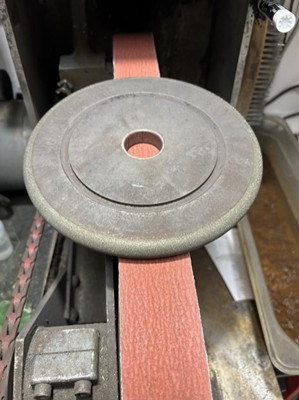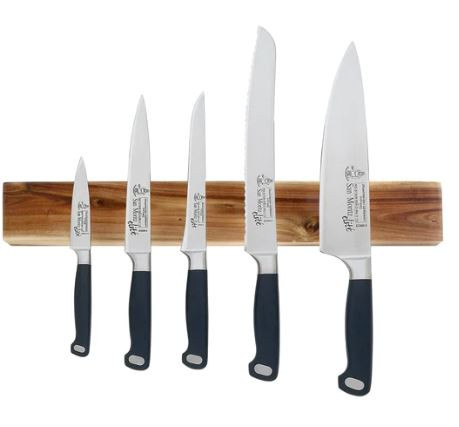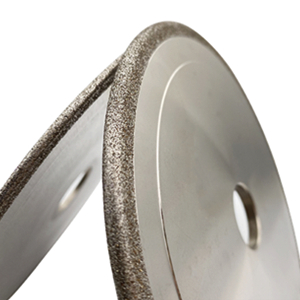Case of electroplated CBN grinding wheel for stainless cutting tools
Recently, one of our American customer who make cutting tools, he want us to suggest grinding wheel for grinding stainless cutting tools.
Because CBN has the characteristics of strong chemical inertness, high temperature resistance and good thermal stability, and it is not easy to chemically react with iron elements. The grinding of materials with high temperature, high hardness and low thermal conductivity such as steel and superalloy is very suitable. So we suggest electroplated CBN grinding wheel for him.

What are the characteristics of stainless steel in grinding?
Usually people call the alloy steel containing more than 12% chromium or more than 8% nickel as stainless steel. This kind of steel has certain corrosion resistance in the atmosphere or in corrosive media, and has higher strength at higher temperatures (>450°C). When the chromium content reaches 169/6-18%, the steel is called acid-resistant stainless steel. Adding MoMnCu, Nb, Ti, W, Co and other elements to stainless steel not only improves the corrosion resistance of the steel, but also changes the internal structure and physical and mechanical properties of the steel. The content of these alloying elements in steel is different, which has different effects on the properties of stainless steel. Some are magnetic, some are non-magnetic, some can be heat treated, and some cannot. Because stainless steel has corrosion resistance, heat resistance, plasticity and toughness, and low thermal conductivity, it is widely used in aerospace, aviation, chemical, petroleum, construction, food and other industrial sectors and daily necessities. The cutting and grinding processability of stainless steel is relatively poor, and it has the following characteristics when grinding it:
(1) Grinding debris is easy to adhere and block the grinding wheel. When grinding stainless steel, abrasive debris is easy to adhere to the working surface of the grinding wheel, blocking the pores on the grinding wheel, and causing the abrasive grains to lose their cutting effect. Different types of stainless steel have different degrees of this phenomenon during grinding. Such as grinding concentrated nitric acid and heat-resistant stainless steel, the most serious. Austenitic stainless steel is next. 1Crl3, 2Crl3 and other martensitic stainless steels have less adhesion and blockage.
(2) The grinding force is large and the grinding temperature is high. Stainless steel has high toughness and high thermal strength, while the cutting edge of the abrasive grains of the grinding wheel has a large negative rake angle, the abrasive debris during the grinding process is not easy to be cut off, the cutting resistance is large, and the extrusion and friction are severe. In addition, the thermal conductivity of stainless steel is much lower than that of ordinary steel parts, resulting in a grinding force of 68000 MPa per unit area and a temperature of (1000~1500) °C in the grinding area, which is prone to burns.
(3) The grinding surface is severely hardened. During the grinding process, the friction and extrusion deformation are large, resulting in serious chilling and hardening of the grinding surface. Due to the large elongation of stainless steel, under the action of large grinding force, the plastic deformation of the metal, the dislocation of the character, and the increase in the strengthening coefficient make the surface hardness of the _T piece higher than the matrix hardness (1.4-2.2) times. This phenomenon is most serious when grinding austenitic stainless steels. At the same time, due to the high temperature of grinding, annealing phenomenon will also occur on the surface of the workpiece, and the annealing depth can sometimes reach (0.0l ~ 0.02) mm.
(4) The deformation of the workpiece is large. The linear expansion coefficient of stainless steel is larger than that of ordinary steel, so it is easy to cause errors in thermal expansion and contraction in size and shape. Especially when grinding slender shafts and thin-walled parts, warpage or dimensional changes are prone to occur.
(5) It is difficult to clamp when non-magnetic stainless steel is flat ground. For austenitic stainless steel such as 1Crl8NigTi, it cannot be magnetized. When surface grinding, the workpiece can only be clamped by mechanical clamping or special fixtures. When grinding thin plates, only the side of the workpiece can be clamped, which will cause deformation or dimensional errors of the workpiece. At the same time, it will also cause chatter during the grinding process, resulting in scaly ripples.


